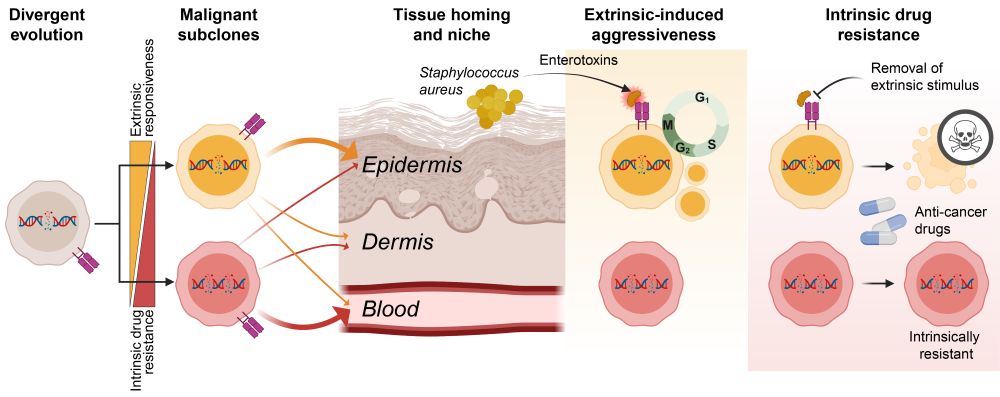

We also thank the LEO foundation and the Danish Cancer Society @cancer.dk for funding the project!

We also thank the LEO foundation and the Danish Cancer Society @cancer.dk for funding the project!
Too many people involved to list here - so go check out the paper!
doi.org/10.1158/2159...
Too many people involved to list here - so go check out the paper!
doi.org/10.1158/2159...
– A brief summary (~15 min) tinyurl.com/bdh6h9tb
– A more in-depth version (~45 min) tinyurl.com/4nunr2v4
Great for listening on the go while diving into the details. 10/
– A brief summary (~15 min) tinyurl.com/bdh6h9tb
– A more in-depth version (~45 min) tinyurl.com/4nunr2v4
Great for listening on the go while diving into the details. 10/



This means reducing inflammation could unmask therapeutic vulnerabilities in aggressive clones. 6/

This means reducing inflammation could unmask therapeutic vulnerabilities in aggressive clones. 6/
But it comes at a price… 5/

But it comes at a price… 5/


👉Leukemic CTCL patients harbor functionally distinct co-existing subclones
👉Subclones respond differently to external factors such as cytokines, bacterial infections, and cancer drugs
👉The most aggressive subclones are also most sensitive to treatment if their extrinsic stimuli are removed
2/

👉Leukemic CTCL patients harbor functionally distinct co-existing subclones
👉Subclones respond differently to external factors such as cytokines, bacterial infections, and cancer drugs
👉The most aggressive subclones are also most sensitive to treatment if their extrinsic stimuli are removed
2/
– A brief summary (~15 min) tinyurl.com/bdh6h9tb
– A more in-depth version (~45 min) tinyurl.com/4nunr2v4
Great for listening on the go while diving into the details. 10/
– A brief summary (~15 min) tinyurl.com/bdh6h9tb
– A more in-depth version (~45 min) tinyurl.com/4nunr2v4
Great for listening on the go while diving into the details. 10/



This means reducing inflammation could unmask therapeutic vulnerabilities in aggressive clones. 6/

This means reducing inflammation could unmask therapeutic vulnerabilities in aggressive clones. 6/
But it comes at a price… 5/

But it comes at a price… 5/


👉Leukemic CTCL patients harbor functionally distinct co-existing subclones
👉Subclones respond differently to external factors such as cytokines, bacterial infections, and cancer drugs
👉The most aggressive subclones are also most sensitive to treatment if their extrinsic stimuli are removed
2/

👉Leukemic CTCL patients harbor functionally distinct co-existing subclones
👉Subclones respond differently to external factors such as cytokines, bacterial infections, and cancer drugs
👉The most aggressive subclones are also most sensitive to treatment if their extrinsic stimuli are removed
2/

